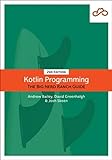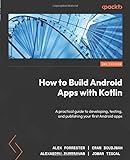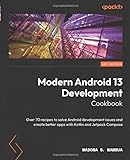To initiate array items using a for loop in Kotlin, you can create an array and then use a for loop to assign values to each element of the array. You can declare the array and its size, and then use a for loop to iterate through the elements of the array and assign values to them. For example, you can create an array of integers and initialize it with values using a for loop as follows:
1 2 3 4 5 6 7 8 9 10 11 12 |
fun main() { val n = 5 val array = IntArray(n) for (i in 0 until n) { array[i] = i } for (element in array) { println(element) } } |
In this example, we create an array of integers with a size of 5. We then use a for loop to iterate through the elements of the array and assign values to each element based on the index of the element. Finally, we print out the elements of the array to verify that they have been initialized correctly.
How to initialize a multidimensional array in Kotlin?
To initialize a multidimensional array in Kotlin, you can use the Array class and specify the dimensions of the array. Here is an example of how to initialize a 2D array of integers:
1 2 3 4 |
val rows = 3 val cols = 3 val array = Array(rows) { IntArray(cols) } |
In this example, we create a 3x3 2D array of integers. The Array(rows) { IntArray(cols) } syntax initializes each element of the outer array with an IntArray of length cols. You can access and modify elements of the array like this:
1 2 3 4 5 |
array[0][0] = 1 array[1][1] = 2 println(array[0][0]) // Output: 1 println(array[1][1]) // Output: 2 |
You can initialize multidimensional arrays of different types and dimensions using similar syntax with different types and sizes.
How to populate an array with values in Kotlin?
There are a few ways to populate an array with values in Kotlin. One way is to use the arrayOf function to create an array with the values already included. Here's an example:
1
|
val numbers = arrayOf(1, 2, 3, 4, 5)
|
Another way is to use the Array constructor and provide the size of the array along with a lambda expression that generates the values. Here's an example:
1
|
val numbers = Array(5) { it + 1 }
|
This will create an array with the values 1, 2, 3, 4, 5.
You can also use the init function to initialize an array and then use it to populate it with values. Here's an example:
1 2 3 4 |
val numbers = Array(5) { 0 } numbers.forEachIndexed { index, _ -> numbers[index] = index + 1 } |
This will create an array with the values 1, 2, 3, 4, 5.
Overall, there are many ways to populate an array with values in Kotlin, so you can choose the one that best fits your needs.
How to filter elements of an array based on a condition in Kotlin?
In Kotlin, you can filter elements of an array based on a condition using the filter() function. Here's an example:
1 2 3 4 5 6 7 |
fun main() { val numbers = arrayOf(1, 2, 3, 4, 5, 6, 7, 8, 9, 10) val evenNumbers = numbers.filter { it % 2 == 0 } println("Even numbers: $evenNumbers") } |
In the above code, the filter() function is used to create a new array evenNumbers that contains only the elements that satisfy the condition it % 2 == 0 (i.e., the element is an even number). Finally, the result is printed to the console.









